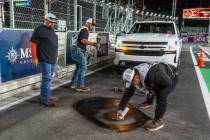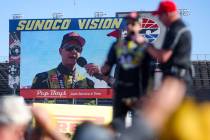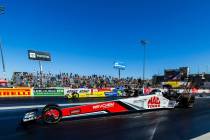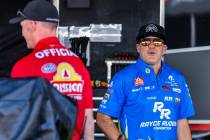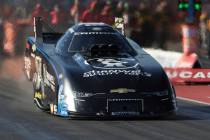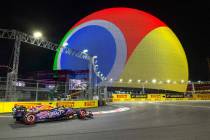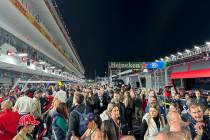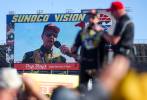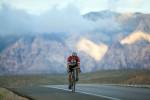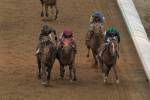Thumbs-up for tandem racing
Having this weekend off could not come at a better time for NASCAR's Sprint Cup series, and it has nothing to do with chocolate bunnies, Peeps or colored eggs.
All involved in the series need a break after the smashing success of Sunday's race on the 2.66-mile Talladega Superspeedway oval.
Pairs of cars running in what Fox TV announcers called "speed dating" kept me on the edge of my living room seat, so imagine the stress it put on drivers, spotters and crew chiefs during the 3-hour, 12-minute race.
Even Fox directors faced more pressure. Instead of stress from working to find key passes to show, they had to determine which ones to put on the air.
There were 88 lead changes among 26 drivers. Skeptics of the love-bug racing will note many of the position changes resulted from drivers in a tandem switching positions to help cool the engine of the pusher. Even those moves often were dramatic.
With four pairs of cars racing side by side or nose to tail to the checkered flag, Dale Earnhardt Jr. pushed Hendrick Motorsports teammate Jimmie Johnson to a .0002-second victory over Clint Bowyer, whose pusher was teammate Kevin Harvick. The win was by less than a foot and matched the closest finish ever in a Cup race.
The race had everything a race fan dreams of, including some wild wrecks where no one was injured. It was the best NASCAR race I've ever watched.
Bowyer, who had a much better seat, agrees.
"If you didn't like that finish, you're crazy. That was an unbelievable finish," he said. "I hope people enjoyed it, because it looked pretty wild through the windshield."
I'll take tandem racing any day over a parade of cars forming a conga line.
Two-car combos have been the rage this year at Talladega and Daytona, where measures have been taken to keep cars under 200 mph by limiting air flow into engines. The two-car trend has allowed cars to gain speed and make more passes, and that defines racing.
The biggest glitch is NASCAR allowing drivers to expand radio frequencies for communication with more competitors. If it isn't safe to text at 70 mph, it can't be safe playing with radio knobs or switches at 195 mph.
Drivers were compelled to renew the CB radio craze of the 1970s because, as the pusher, you can't see beyond your partner's rear spoiler. Most wrecks resulted from a point man needing to slow in the blink of an eye, then getting turned by his pusher, who couldn't tap the brakes or back off the throttle in time.
Robby Gordon told me Wednesday the 4-inch height of the solid spoiler is the main culprit for restricted vision.
Why not convert to a clear spoiler made of a space-age material that can withstand the pressure that rushing air puts on the traditional spoiler?
Las Vegan Brendan Gaughan, who drove a Cup-style car before returning to the NASCAR truck series this year, said the problem isn't a blinding spoiler. He said a combination of a bulky driver's seat, rollcage support bars and even sun glaring off the rear window of the lead car drops a pusher's visibility beyond the hood to near zero.
So if a clear spoiler won't help, I'll accept expanded two-way radio chatter because we need more races such as this year's at Daytona and Talladega -- and let's hope at each of those tracks one more time this season.
NASCAR should embrace this tandem style to the extent of testing the use of power-choking restrictor plates for every race on tracks 1.5 miles and longer where passing and action have been limited. Some will regard it as blasphemy to promote expanding the use of restrictor plates, but we deserve more races such as Sunday's.
Start counting the days for the next love-bug fest at Daytona on July 2.
Jeff Wolf's motor sports column is published Friday in the Las Vegas Review-Journal. He can be reached at jwolf@reviewjournal.com or 702-383-0247. Visit lvrj.com/motorsports for more news and commentary. Follow Wolf on Twitter: @lvrjwolf.









